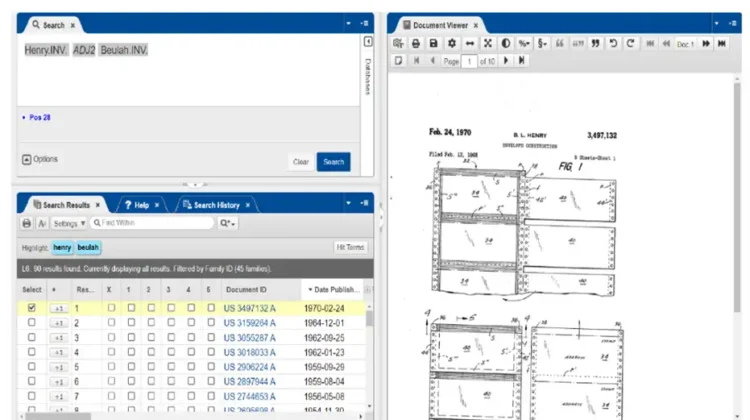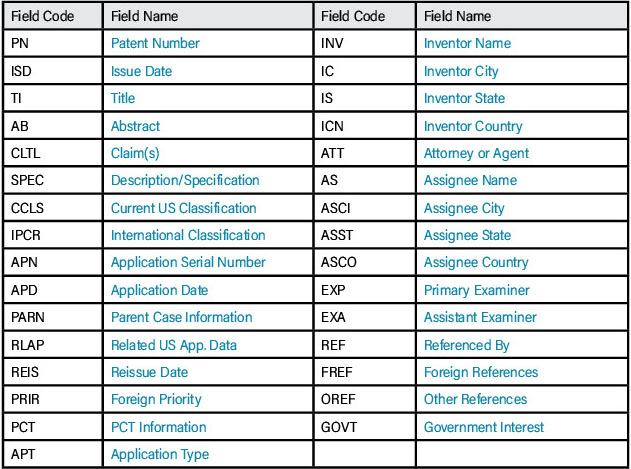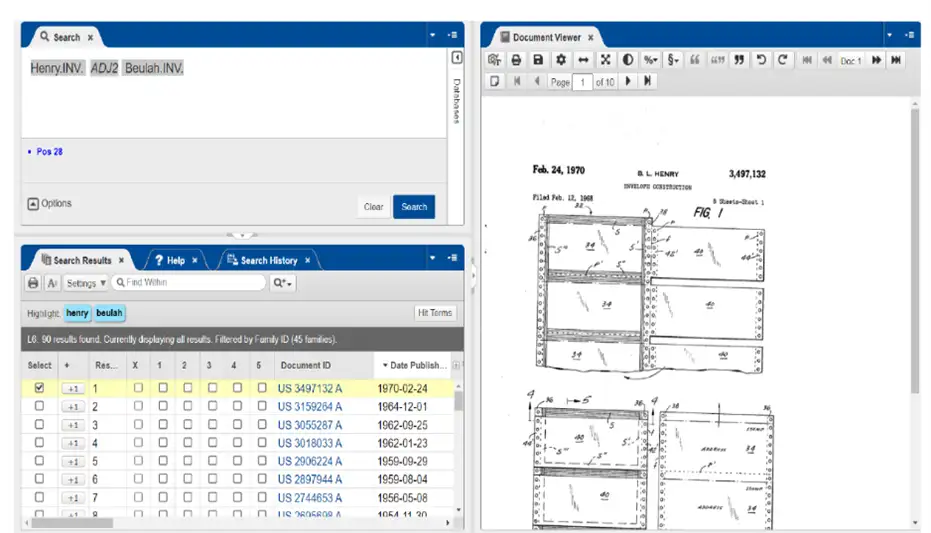
In the last quarter’s article, we reviewed the importance of conducting a patentability or novelty search relative to our invention, as well as some of the publicly available patent databases for conducting such a search. Building off that article, we now will take the next step in our patenting journey by diving into more detail of how to conduct such a search for prior art patent application publications and granted patents with the ultimate goal of deciding whether the invention is novel over the prior art. Recalling from last quarter’s article, we introduced the US Patent and Trademark Office (USPTO) Patent Public Search site at https://www.uspto.gov/patents/search/patent-public-search for text and classification searching of US patents and US patent publications.

Using the Advanced search option, two or more words/phrases that describe one’s invention can be combined together with one or more Boolean operators (such as “AND”) to identify published patents that include the combination of words/phrases in the search string. Additionally, the words/phrases can be field-limited to the section of the patent that includes them, such as, for example, the Title, Abstract, Specification or Claims, by using an appropriate field code after the word /phrase. Some of the more commonly used fields and their associated field codes are provided in Table 1.
As an example to illustrate the use of the Advanced search option, if we wish to identify US patent publications that an inventor named Henry Beulah is an inventor on, we can enter “Henry.Inv. ADJ2 Beulah.Inv.” in the top-left search query box, where the proximity operator “ADJ2” requires that the two words be adjacent to one another within two words. The US patent publications that satisfy the search query then are listed in the bottom-left search results box. Each of the patent publications from the search results box then can be viewed in the right patent document viewer box, which also allows for downloading of the patent publications (see Figure 1).
A five-step strategy for conducting a patentability search relative to one’s invention is as follows. Step 1 is to brainstorm words/phrases that describe the invention. For example, what problem does it solve? What is its structure (components) and features? What is it made out of? How is it used? How does it function? Step 2 is to conduct a keyword text search at the USPTO Patent Public Search site using the words/phrases from Step 1. In conducting the search, use Boolean operators to group word/phrases together, use proximity operators or quotes for words that need to be adjacent to one another and, as needed, filter by selected fields (title, abstract, claims, assignee, inventor) using field codes.

Step 3 is to conduct an in-depth review of US patent publications satisfying the search criteria of Step 2. Scan the front page and, in particular, the title and abstract for relevancy to one’s invention. If relevant, then review the other sections of the patent for further relevancy. Save the most relevant searches, and then refine and repeat with altered search queries in an attempt to find the most relevant patent references. Step 4 is to conduct a patent classification search based on CPC values by inputing the search words /phrases describing the invention from Step 1 into the USPTO Manual of Classification for identifying relevant CPC values to the invention. Relevant CPC values also may be identified from relevant patents to the invention identified in Step 3. Next, input into the Advanced search option of the USTPO Patent Public Search site the relevant CPC values to obtain a listing of patent publications for relevancy review in the same manner as Step 3.
Step 5 is an optional step to broaden the scope of the search by extending it to foreign patent publications (such as the European Patent Office and/or the World Intellectual Property Organization patent databases) and non-patent literature (such as Google Scholar). Patent searching is an iterative process from broad to narrow and then back out to broad. Therefore, one should design the search strategy to be somewhat over-inclusive, but not so broad as to make viewing the number of “hits” unreasonable. While conducting a patent search, one should take scrupulous notes while searching to avoid repeating searches already conducted and to avoid looking at patent references already viewed. As a rule of thumb, the number of relevant references identified in a patentability search relative to the invention should be less than 25.
In the next quarter’s article, we will cover the requirements for patentability in the US so that we can assess whether any of the relevant patentability search references would be prohibitive to preparing and filing a US patent application relative to one’s invention.

Robert A. Migliorini
203-200-8065; rampatlaw@gmail.com
Patent Attorney

